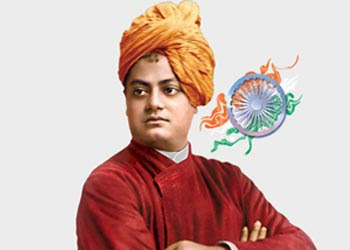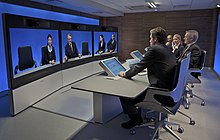Videoconferencing
From Wikipedia, the free encyclopedia
Videoconferencing (VC) is the conduct of a videoconference (also known as a video conference or videoteleconference) by a set of telecommunication technologies
which allow two or more locations to communicate by simultaneous
two-way video and audio transmissions. It has also been called 'visual
collaboration' and is a type of groupware.Videoconferencing differs from videophone calls in that it's designed to serve a conference or multiple locations rather than individuals.[1] It is an intermediate form of videotelephony, first used commercially in Germany during the late-1930s and later in the United States during the early 1970s as part of AT&T's development of Picturephone technology.
With the introduction of relatively low cost, high capacity broadband telecommunication services in the late 1990s, coupled with powerful computing processors and video compression techniques, videoconferencing has made significant inroads in business, education, medicine and media.



No comments:
Post a Comment